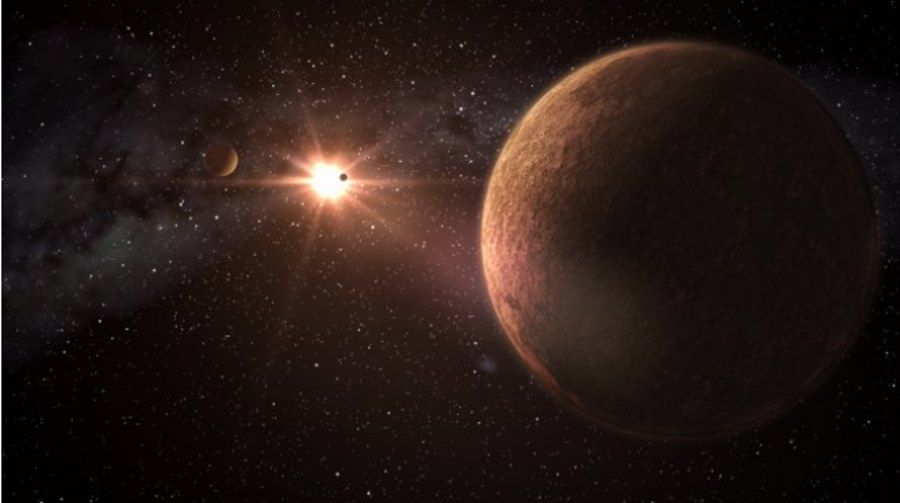
A solar system with three Earth-like planets has been discovered
Astronomers have discovered two previously unknown planetary systems, one of which contains three Earth-like planets. One of these planets is almost the same size as our planet, and the other two are only slightly larger.
The discovery was made by a team of astronomeroat the Instituto de Astrofisica de Canarias (IAC) and the University of Oviedo. Researchers have spotted two planetary systems in data collected by the Kepler Space Telescope. The results of the study were published in „Monthly Notices of the Royal Astronomical Society”.
The first of the systemsow is located in the constellation Sextant at a distance of 160 light years from us and contains three planets, ktore are very similar to Earth. One of them is almost exactly the same size as our planet, and the other two are only slightly larger. Planets are located close to their star, whichor is the red dwarf K2-239. They circle it every 5, 8 and 10 days.
The second system discoveredow contains two super-Earths – rocky planets twice the size of our planet. They are circulating wokoł red dwarf K2-240.
Red dwarfs, aroundoktoThe orbits of the newly discovered exoplanets are old and relatively small. They are also cooler than our sun, but the planets orbit very close to their stars, which means that the temperatures on them are probably too high for life to form on them.
The planets were discovered by the transit method – that is, the passage of one celestial body through the disk of another. When a planet passes in the background of a star, it obscures it, by analyzing the weakening of the star’s brightness it can be detected. The search for extrasolar planets is a relatively young field. The first planet orbiting wokoł a star similar to our Sun was discovered in 1995. Today we know of more than 3,600 exoplanets – from rocky objectsothe size of Earth, to huge gas giants such as Jupiter.
Scientists are now hoping for future observations already made with the James Webb Space Telescope, whichory is scheduled to be launched into space in 2020, will allow us to learn more about the discovered planets. It may be possible to characterize the chemical composition of the planets’ atmospheres.
Sourceobackground: The Independent, pic. Instituto de Astrofísica de Canarias


